
[320] Sorbus aria, Whitebeam
Introduction
The genus Sorbus is complex, with about one or two hundred species divided into several subgenera. The subgenus Aria, sometimes considered a separate genus, has about fifty species known as Whitebeams, of which about thirty species occur in Britain. We will take Sorbus aria, the Common Whitebeam, as typical and I will call it just the Whitebeam.
Unlike [321] the Rowans, which are other members of the genus Sorbus, Whitebeams have lobed, almost oval leaves reminiscent of some Oak trees.
We will consider the rest of genus Sorbus tomorrow.
Taxonomy
Kingdom- Plants
Division – Vascular Plants
Class – Angiosperms (Flowering Plants)
Order – Posales
Family – Rosaceae
Subfamily – Amygdaloideae
Tribe – Maleae
Subtribe – Malinae (Apples and others)
Genus – Sorbus
Subgenus – Aria
Scientific Names – Sorbus aria and many others
When considered as a separate genus, other species retain their species epithets but Sorbus aria becomes Aria nivea (because Aria aria is not permitted for a plant species name.)
Many varieties and cultivars are available including hybrids with other species in the subgenus Aria.
Name
Whitebeam comes from the colour of the leaves. The word ‘white’ (as in white coffee, white wine or white grapes,) can mean relatively light coloured rather than actually white. Beam is an Old English word meaning tree.
For Sorbus, see tomorrow. Aria is the old Latin name for the Whitebeam as used by the Greek philosopher Theophrastus (about 300 BC.) Nivea means snowy or snow-covered.
Description
One of the most notable things about a Whitebeam is that is doesn’t look like a Rowan, but we will come to Rowans tomorrow.
The Whitebeam is a typical deciduous tree with the shape of many other typical tree species.



It gets the designation ‘white’ from the newly sprouting leaves and the undersides of leaves that are lighter in colour than the top of the leaves – a trait shared by many other trees and plants such as White Poplar and sometimes [306] Blackberries. It is so good at facing the leaves to the sun that this is not obviously noticeable. I had to look through all of my pictures to find one or two leaves facing the wrong way.

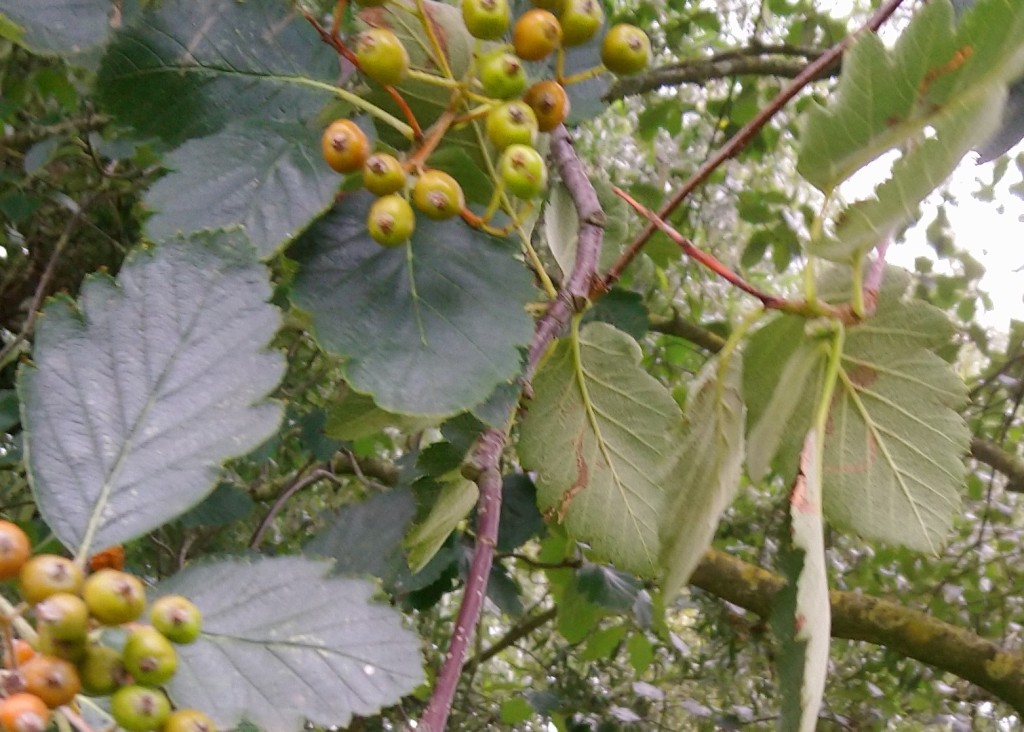
Biologists have lots of technical terms to describe leaf shapes. I could call the leaves of a Whitebeam lobed, or perhaps they are better described as having curly serrated edges, but you can see the shapes from a few pictures above and below.

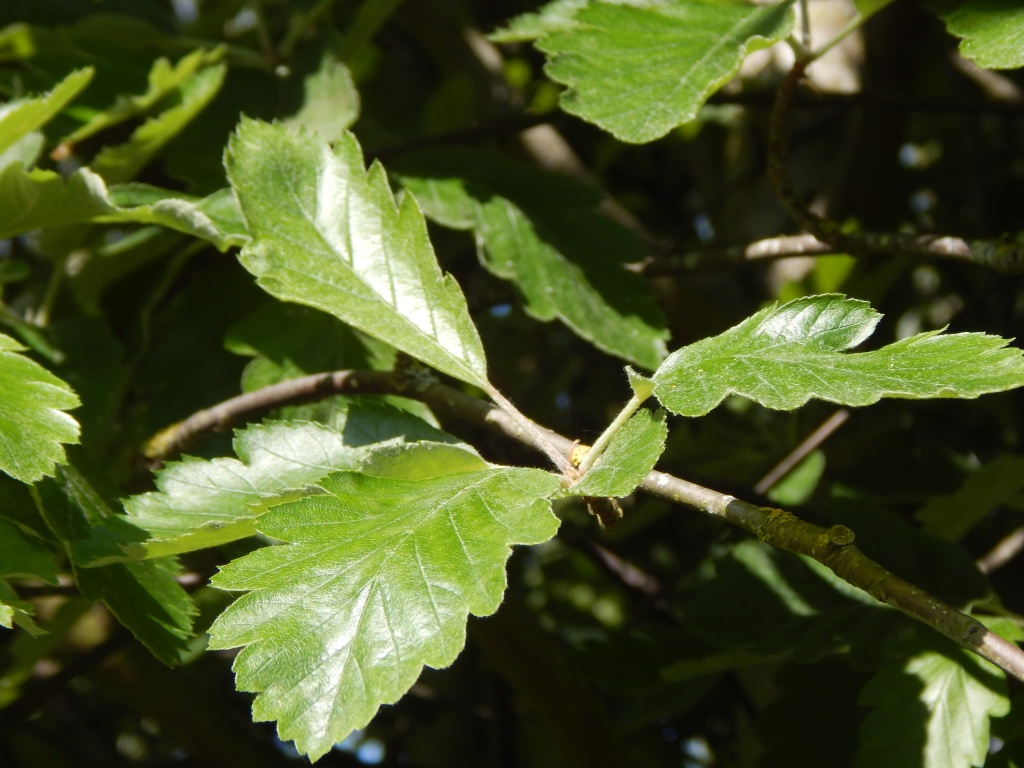

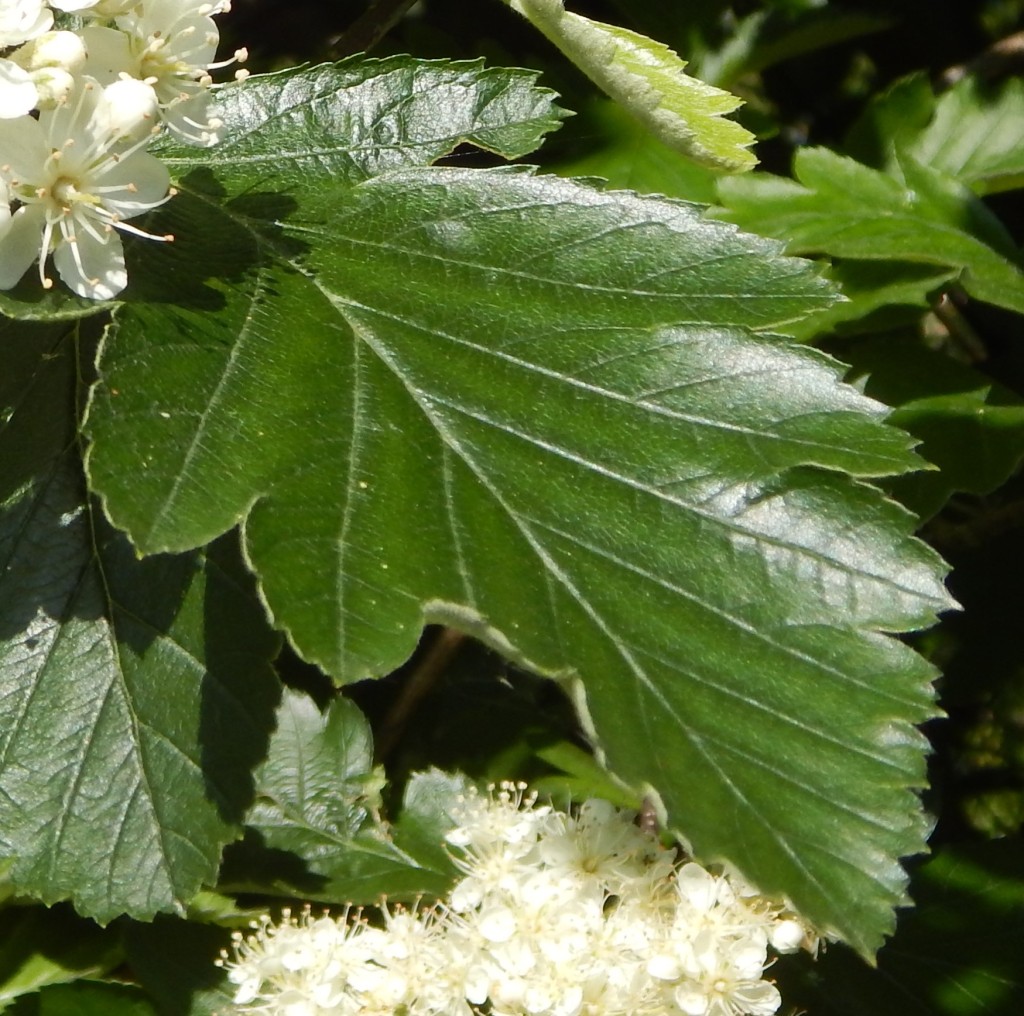

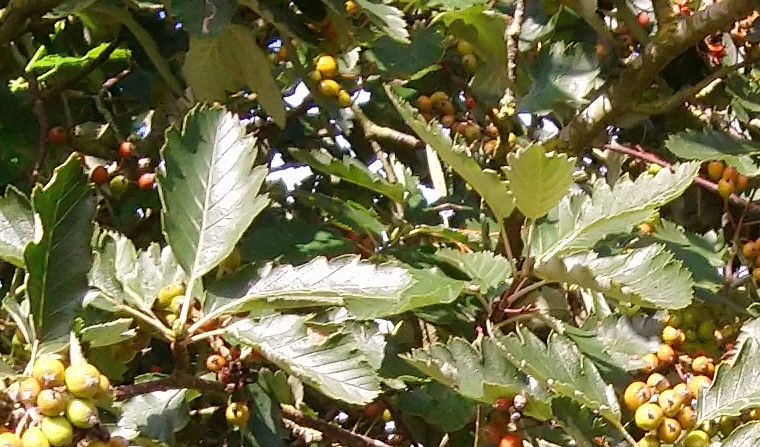
It is principally the shape of the leaves that distinguishes Whitebeams from Rowans and other members of the genus Sorbus.
The flowers are open, five-petalled and completely white including prominent white stamens. They grow in tight bunches that cover the tree in Spring.

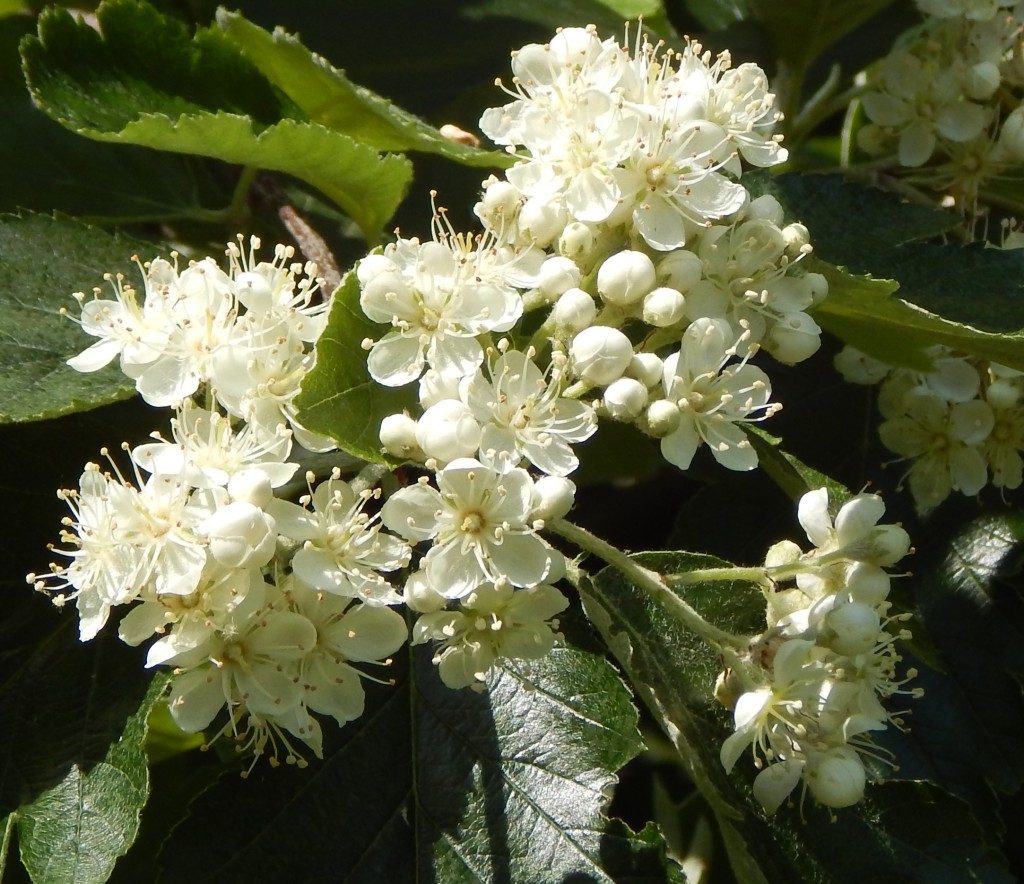


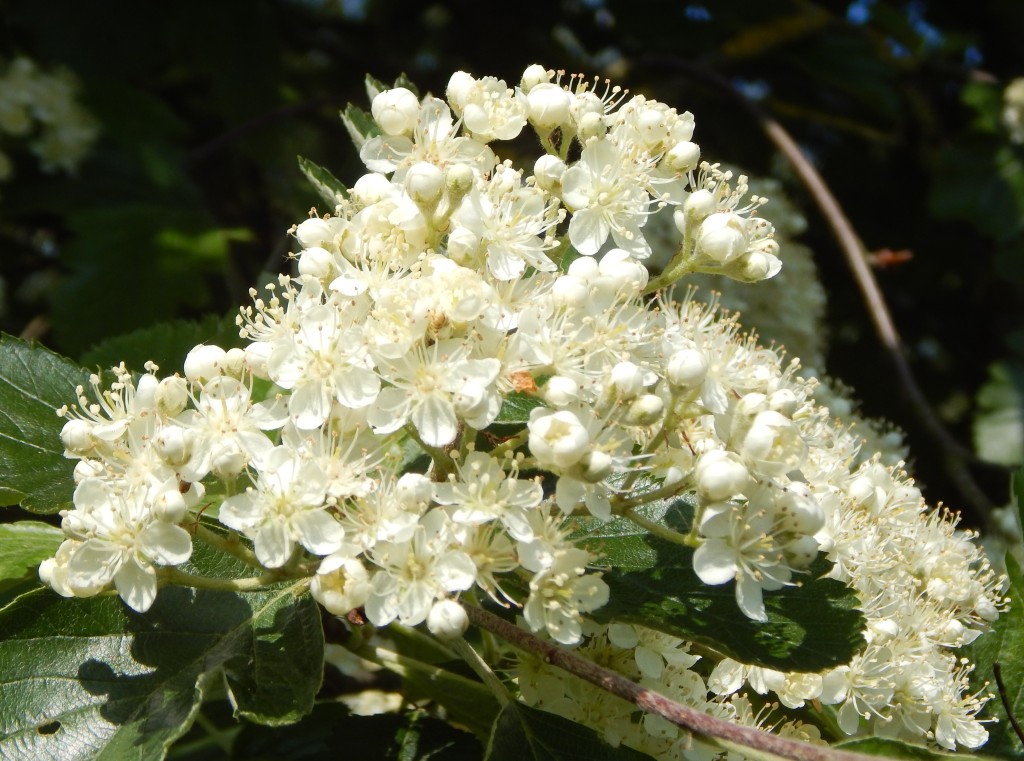

The fruits are technically pomes (as for all in the Apple subtribe Malinae,) but they look like what most people would call berries, turning from green to orange-brown and then red.
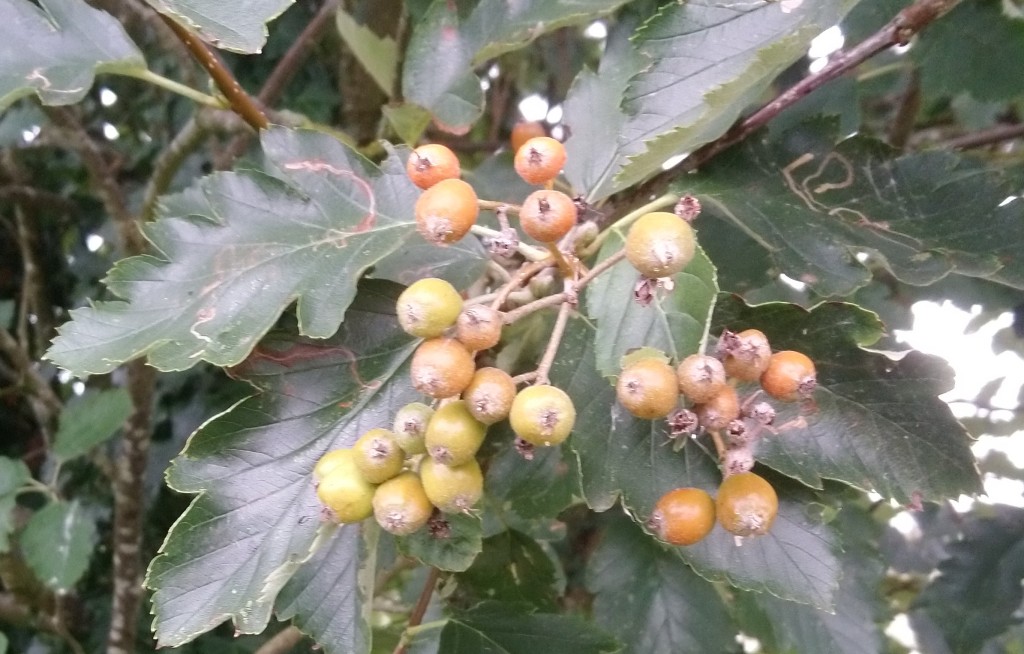

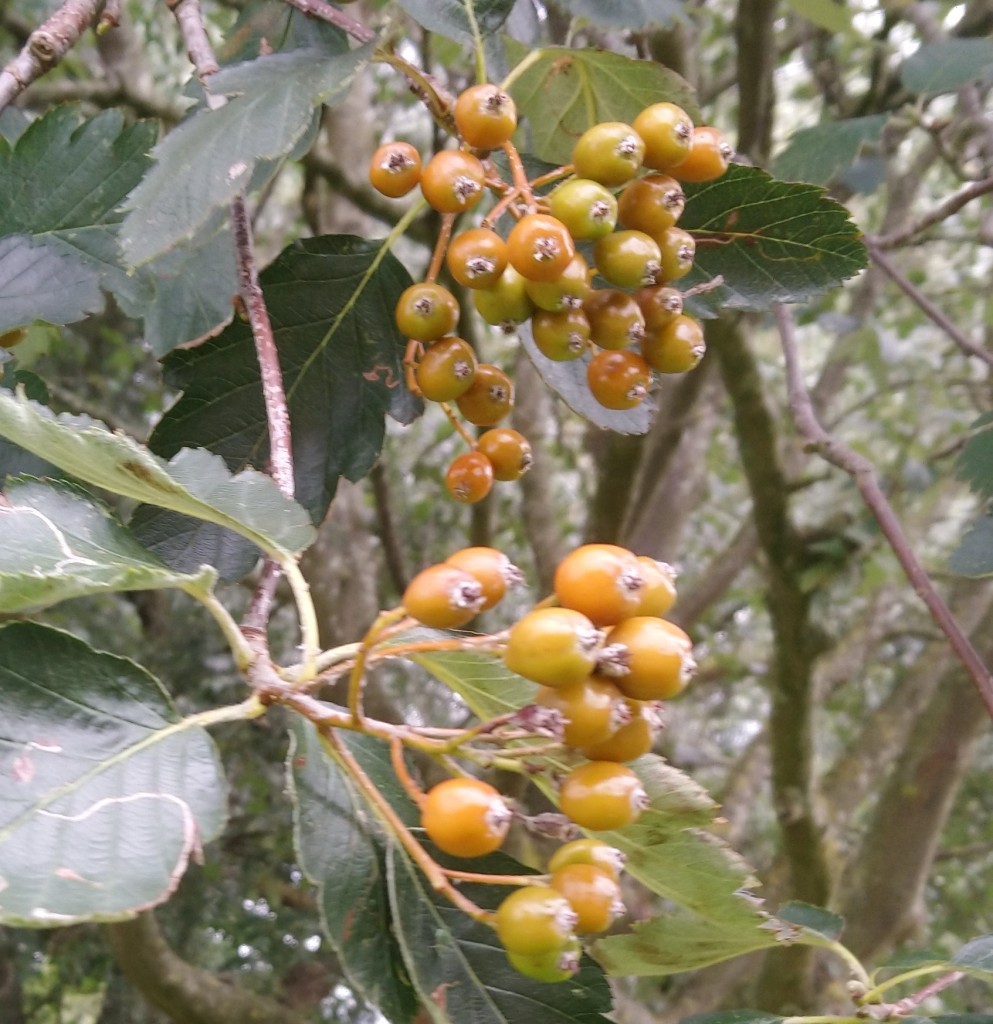
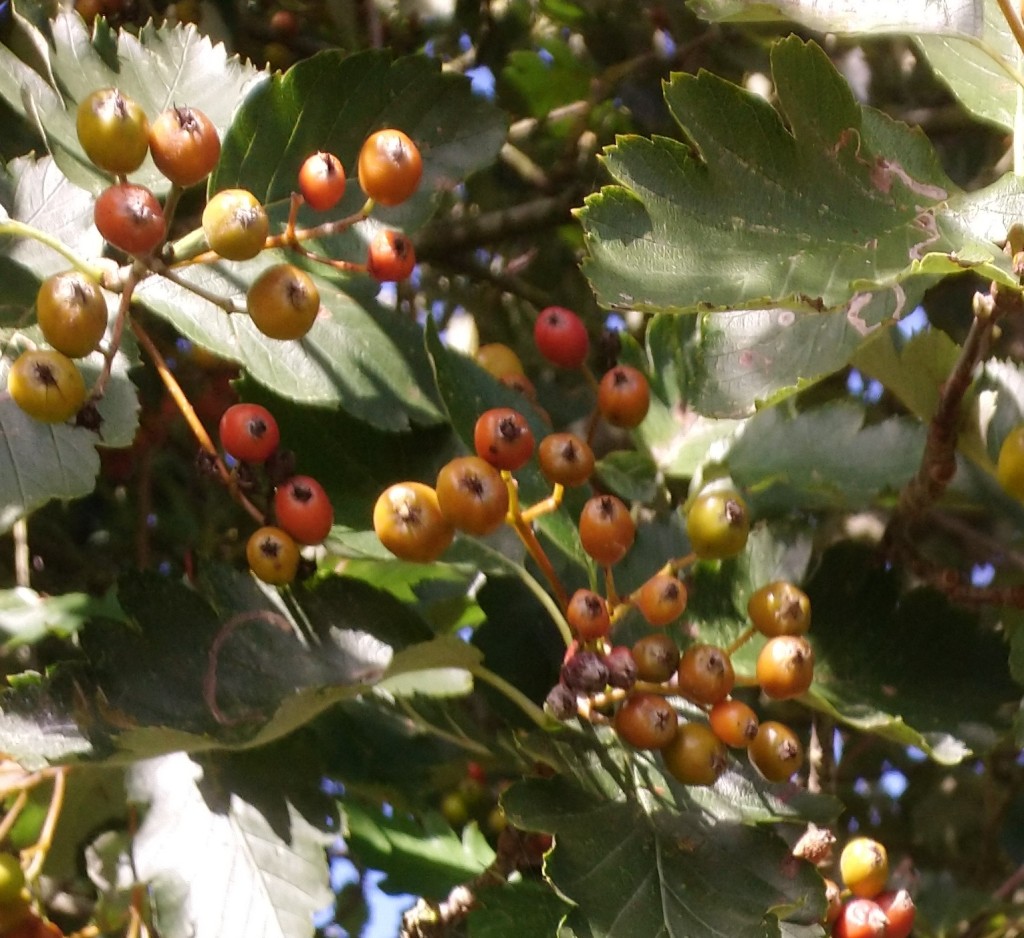
Habitat and use
Sorbus aria has a patchy natural range covering most of central Europe and other parts of Europe – including Wales and southern England but not the extreme south-west. Several other Whitebeam species may be found mostly with very small geographical distributions. These include Sorbus anglica, the English Whitebeam, a very rare species found in a few spots in England and Ireland.
Whitebeams of various species are cultivated in parks and gardens.

See also
We have already met [220] Apples, Pears and Quince; [101] Cotoneaster; [103] Hawthorn; [260] Photinia; and [286] Firethorn from the subtribe Malinae. These are the species with pomes as fruit.
You will have to wait until tomorrow for the Rowans and other members of Sorbus.
